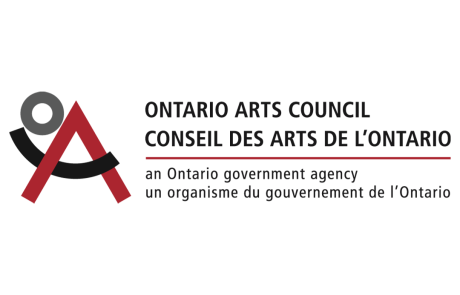The Way Ahead: Surveying The Curatorial Landscape Review
By Linda Grussani
Just a couple months shy of its first anniversary, the Aboriginal Curatorial Collective held its inaugural colloquium in the very friendly and vibrantly artistic city of Winnipeg, Manitoba, from March 17 to 19, 2006. The successful two day gathering, generously hosted by the artist-run Urban Shaman Gallery (USG) and supported by a project grant from the Canada Council for the Arts and the Ontario Arts Council, brought together curators, writers, artists, art professionals and critics from across Canada and the USA to discuss issues of the current Aboriginal curatorial landscape via a carefully selected schedule of presentations and panel discussions. On the first morning of the colloquium all attendees were warmly welcomed by USG director Steve Loft and Marjorie Beaucage, writer, independent film and video artist, who carried out the official welcome and prayer. ACC co-founder, Barry Ace followed with a very special presentation of an Eagle Feather to Tom Hill on behalf of the ACC in recognition of Mr. Hill’s many contributions to Aboriginal art and Aboriginal art history. It is hoped that this honouring ceremony will continue on in future ACC colloquia. Fittingly, the first presentation was by Tom Hill in which he provided an historical and contemporary overview of the contributions made by Aboriginal curators. This presentation was followed by Dr. Alfred Young Man’s presentation on the history of Society of Canadian Artists of Native Ancestry (SCANA) and a report on the current state of the organization. The presentations were followed by a series of panel discussions that covered topics ranging from the important contributions and funding challenges of artist-run centres, the collections and collecting policies by Canadian national institutions, the opportunities offered by both federal and provincial funding agencies, and the opportunities and challenges for Aboriginal curators, academics, artists and art professionals working in an academic environment. On the second day of the colloquium, the panel discussions were followed by a series of presentations in which ACC members were given time to discuss their concerns and to celebrate accomplishments related to their research, exhibitions and publications. Complementing the presentations and panel discussions, the colloquium organizers also planned several exciting events that both celebrated the Aboriginal arts community and provided numerous networking opportunities. On the eve of the colloquium, attendees were invited to attend the vernissage for Nomenclature (Apache Bombs and Helicopters) a fabulous exhibition of new work by Robert Houle on view at the USG from March 17 – April 29, 2006. Following the presentations on day one, attendees were invited to a party held to celebrate the web launch of the ACC’s new website and the book launch of the Walter Phillips Gallery publication – Transference, Tradition, Technology: Native New Media Exploring Visual and Digital Culture (2005). With four of the publication’s contributors in attendance, we were all clamouring for an autograph or two from Marjorie Beaucage, Dana Claxton, Steven Loft and Ahasiw Maskegon-Iskwew. Later in the evening, artist Kent Monkman gave a very entertaining presentation on the evolution of his artistic practice and delighted all with the screening of two films Group of Seven Inches (2005) and Future Nation (2003), marking a wonderful end to a very long and productive day. The ACC business meeting was held at the end of day two. At the close of this meeting it was announced by Tribe, Inc., Director, Lori Blondeau that Saskatoon would kindly host the next ACC colloquium and AGM. Stay tuned to the ACC website for more information about the next colloquium!

Linda Grussani (Kitigan Zibi Anishinabeg/Italian ancestry) is a curator and art historian born and raised on Anishinàbe Akì in the Ottawa area.
Grussani has spent over two decades working to advance Indigenous people, culture and arts, as well as promote positive structural change and advance Indigenous cultural diplomacy as a curator, arts administrator and academic. She is currently a doctoral candidate in the Cultural Studies program at Queen’s University.
Grussani most recently held the positions of Curator of Aboriginal Art at the Canadian Museum of History (CMH) and Director of the Indigenous Art Centre for Crown-Indigenous Relations and Northern Affairs Canada (CIRNAC). She has also worked in the Indigenous art department at the National Gallery of Canada.
Grussani currently serves on the Inuit Art Foundation’s Board of Directors, the Agnes Etherington Art Gallery’s Indigenous Advisory Circle (Queen’s University) and the Indigenous Collections Symposium Working Group for the Ontario Museums Association. She is also a member of the Indigenous Archives Gathering Steering Committee for Archive/Counter-Archive (York University) and the North American Cultural Diplomacy Initiative (Queen’s University).









